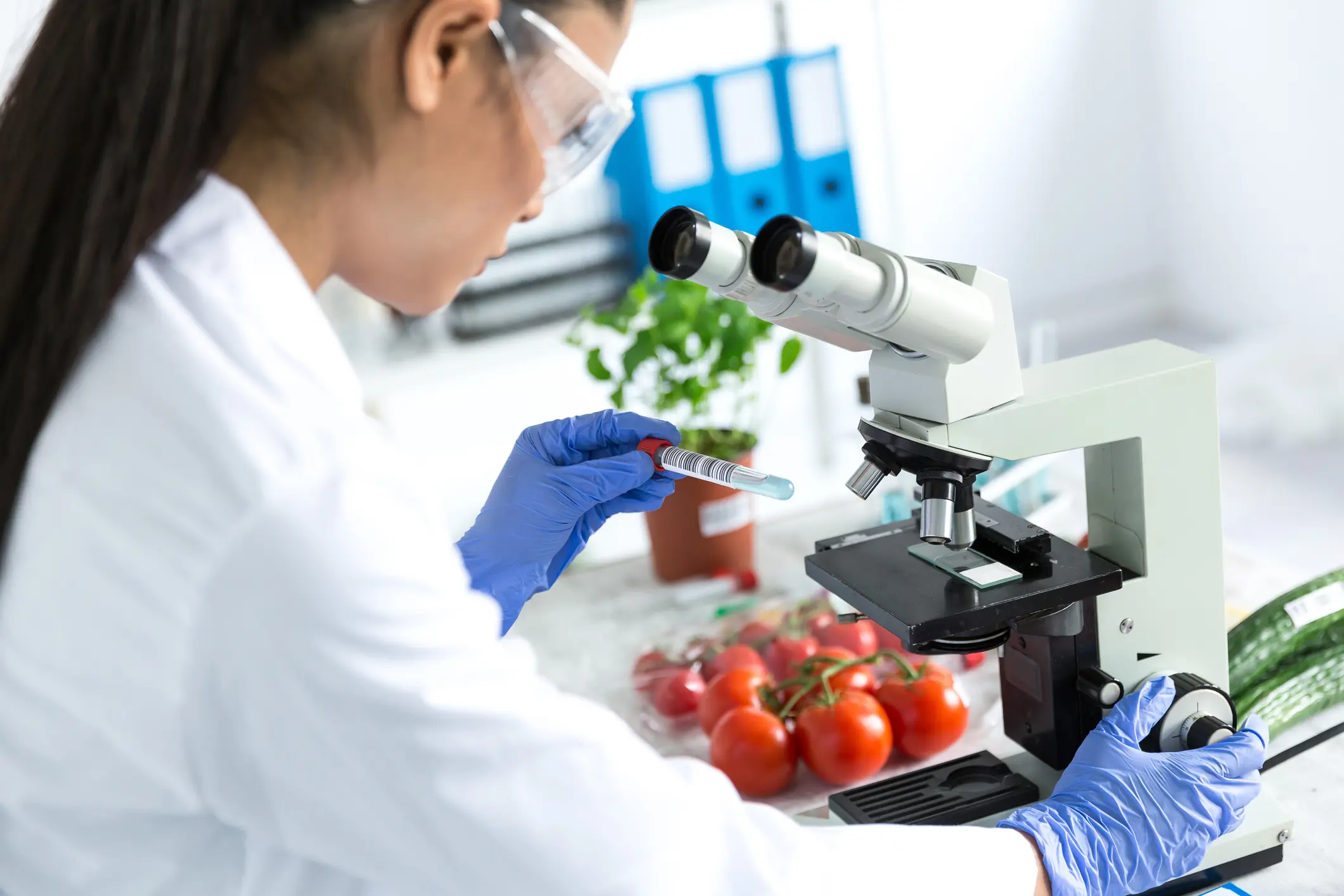In the fiercely competitive consumer packaged goods (CPG) industry, managing food ingredient quality is crucial for brand integrity, consumer trust, and public safety. As consumers become more discerning and regulatory standards tighten, the pressure to deliver consistently high-quality food products intensifies. To succeed, CPG companies must master the complexities of food ingredient quality management, starting with a thorough understanding of its core principles and best practices.
Understanding Food Ingredient Quality Management
Effectively managing food ingredient quality requires a multifaceted approach, including choosing reliable suppliers, meticulous storage practices, comprehensive staff training, and advanced quality control. Mastering each element ensures consistent product quality, maintains consumer trust, and achieves long-term success.
Globally, an estimated 600 million people[i] fall ill after eating contaminated food each year, with 420,000 deaths resulting from foodborne illnesses. This illustrates the critical need for robust food ingredient quality management.
Choosing Reliable Suppliers
Reliable suppliers are the foundation of quality management. Choose suppliers carefully by evaluating their reputation and policies. Regular audits, performance monitoring, and certifications like ISO and HACCP are key parts of the supplier approval process. Clear supplier management and communication help prevent issues before they arise.
Storing Ingredients Properly
Keeping ingredients fresh until they will be used is the single most important aspect of managing food ingredient quality. Key practices include temperature control, humidity management, FIFO inventory rotation, and pest control. These measures preserve ingredient integrity and extend shelf life.
Training Your Staff
Just like your suppliers are your front-line defense against food ingredient quality issues, your internal teams play a pivotal role in the process as well. Staff training should focus on quality control measures, food safety practices, data analysis and equipment maintenance. Regular workshops and refresher courses ensure employees stay informed and effective.
Using Quality Control Tools
Advanced quality control tools, including automated inspection systems, laboratory testing equipment, and Specification Data Management (SDM) solutions, streamline monitoring, ensure compliance, and provide real-time data.
Implementing Corrective Actions
Corrective actions address and prevent quality issues. Establishing a process for deploying corrective actions should be a fundamental part of your overall quality assurance plan to address and resolve any deviations from quality standards. Key steps include identifying issues, root cause analysis, implementing solutions, and monitoring effectiveness. Regular assessments and maintaining traceability ensure continuous improvement and readiness for any necessary recall plans.
Notably, over 50% of consumers[ii] are willing to pay a premium for transparent labeling, indicating that effective corrective actions and transparent practices can enhance consumer trust and even command higher prices.
Seeking Customer Feedback
Customer feedback is one of the most powerful ways to gather insights into product quality and areas for improvement. It provides valuable data for refining quality management practices. Use surveys, online reviews, and customer service interactions to gather insights. This data helps refine practices and enhance CPG product quality.
In fact, 64% of shoppers[iii] say they would switch from a brand they usually buy to another CPG brand that provides more in-depth product information, underscoring the importance of transparency.
Essential Food Quality Control Procedures
Implementing a comprehensive food quality control program is a necessity for CPG companies looking to produce high-quality food products consistently. This involves several key procedures that ensure the safety, quality, and traceability of every ingredient and finished product:
- Ingredient Specifications: Develop clear and detailed descriptions of quality requirements for each ingredient. This includes parameters such as purity, potency, and acceptable levels of contaminants.
- Incoming Goods Inspection: Conduct thorough checks upon receipt of raw materials to verify their quality and compliance with specified standards. This step is crucial for identifying deviations early and preventing compromised ingredients from entering the production process.
- Production Formulation: Ensure accurate and consistent recipes by meticulously measuring and blending ingredients. Standardized and digitized formulations help maintain product quality and taste across different batches.
- Manufacturing Procedures: Standardize food manufacturing processes to maintain consistency and quality. This includes creating detailed process maps and standard operating procedures (SOPs) for each step in the production process.
- In-Process Records: Keep detailed digitized records of each production step in a single source of truth to ensure traceability and monitor ingredient movement. This includes documenting ingredient lot numbers, processing conditions, and any deviations from the standard process.
- Product Standards: Establish benchmarks for the final product to ensure consistency. This includes setting parameters for taste, texture, appearance, and nutritional content.
- Packaging and Labeling: Ensure all CPG packaging and labeling meet regulatory requirements. Accurate labeling is essential for consumer safety, especially regarding allergens and nutritional information.
- Warehousing: Store ingredients properly to maintain their quality. This involves controlling temperature, humidity, and implementing pest control measures to prevent contamination.
- Good Manufacturing Practices (GMP) and Sanitation: Maintain cleanliness and prevent contamination through rigorous sanitation protocols. This includes regular cleaning schedules, equipment maintenance, and personal hygiene standards for staff.
- Laboratory Analysis: Conduct regular testing to ensure safety and quality. This includes microbiological testing for pathogens, chemical analysis for contaminants, and sensory evaluation to ensure the product meets quality standards.
- Recall Plan: Be prepared to recall products if necessary to protect consumers and maintain trust. A well-defined recall plan outlines steps for identifying affected products, notifying stakeholders, and safely removing them from the market.
Having established the essential food quality control procedures, the next step is to integrate these practices into a comprehensive Quality Management System (QMS) to deliver consistent oversight throughout the production process.
Quality Management Systems (QMS)
A comprehensive QMS helps CPG companies streamline their processes, comply with regulatory requirements, and maintain consumer trust. Here are the key components of an effective QMS:
- The Food Safety Plan – HACCP: A proactive, systematic approach to identifying and controlling food safety hazards. Assess potential hazards at each stage of production and implement control measures to ensure safety from production to consumption.
- Food Safety and Quality Manual: A detailed manual outlining the company’s food safety policies, procedures, and quality standards. This serves as a reference for employees to maintain food safety and quality.
- Document Version Control: A system to manage and control document versions, ensuring employees have access to the latest procedures and guidelines, reducing errors and maintaining the integrity of the QMS.
- Record Completion and Maintenance: Accurate and complete records of all quality control activities are essential for traceability and compliance. This includes documenting ingredient specifications, production processes, test results, and corrective actions.
- Internal Audits: Regular internal audits assess the effectiveness of the QMS and identify areas for improvement, ensuring compliance with food safety regulations and company standards.
- Supplier and Raw Material Approval and Performance Monitoring: Establish criteria for approving suppliers and raw materials based on quality and safety standards. Continuously monitor supplier performance through audits, inspections, and feedback.
- Corrective and Preventive Actions: Procedures for identifying, investigating, and addressing non-conformances. Corrective actions resolve existing issues, while preventive actions prevent future occurrences, supporting continuous improvement.
- Control of Non-Conforming Product: Processes for managing products that do not meet quality standards. This includes identifying, segregating, and evaluating non-conforming products to determine appropriate corrective actions, such as rework or disposal.
- Traceability: A system to track the movement of ingredients and finished products through the supply chain. Effective supply chain traceability enables quick identification and isolation of affected products in the event of a quality issue or recall.
- Complaint Handling: A process for receiving, investigating, and resolving customer complaints. Analyzing complaint data helps identify recurring issues and implement corrective actions to improve product quality and customer satisfaction.
- Management of Incidents, Product Withdrawal, and Product Recall: Procedures for managing food safety incidents, product withdrawals, and recalls. This includes identifying affected products, notifying stakeholders, and safely removing products from the market. A well-defined recall plan helps protect consumers and maintain trust in the brand.
Site and Product Standards
With a comprehensive Quality Management System (QMS) in place, the next step is to define and maintain site and product standards. These standards ensure consistent quality and compliance across all operations.
Site Standards:
- Facility Layout and Design: Optimize the facility layout to promote efficient workflow, minimize contamination risks, and facilitate cleaning and maintenance. A well-designed layout enhances operational efficiency and food safety.
- Sanitation and Hygiene: Implement strict sanitation protocols and hygiene practices to prevent contamination. This includes regular cleaning schedules, proper waste disposal, and personal hygiene requirements for staff.
- Environmental Controls: Maintain environmental controls such as temperature, humidity, and air quality to preserve ingredient and product quality. Monitoring these factors helps prevent spoilage and contamination.
Product Standards:
- Product Specifications: Define detailed product specifications outlining quality attributes like taste, texture, appearance, and nutritional content. These specifications guide production and quality control efforts.
- Shelf Life and Storage Conditions: Establish and verify the shelf life and optimal storage conditions for each product. Conduct stability tests to ensure products remain safe and high-quality throughout their shelf life.
- Packaging Requirements: Develop packaging standards that protect product integrity and comply with regulatory requirements. Proper packaging prevents contamination, extends shelf life, and provides essential information to consumers.
Enhancing Regulatory Compliance
In the highly regulated food industry, adherence to regulatory requirements is part of the process and not only promotes product safety and consumer trust, it helps CPG companies avoid legal penalties.
Regulatory Compliance Strategies:
- Understanding Regulations: Stay updated on relevant local, national, and international food safety regulations. Familiarity with guidelines from agencies like the FDA, USDA, and EFSA helps align your operations with legal requirements.
- Documentation and Record-Keeping: Maintain thorough documentation and records of all compliance-related activities, including production records, quality control logs, and audit reports. Proper documentation is essential for demonstrating compliance during inspections and audits.
- Training and Awareness: Regularly train staff on regulatory requirements and the importance of compliance. Keeping employees informed about the latest regulations and their role in maintaining compliance is vital for a cohesive approach.
- Internal Audits: Conduct regular internal audits to identify compliance gaps and areas for improvement. These audits help prepare for external inspections and ensure ongoing adherence to regulatory standards.
Promoting Sustainability in Ingredient Sourcing
86% of consumers[iv] who report transparency as important also rank traceability as extremely or very important, highlighting the need for clear and honest sourcing practices. With both consumers and companies prioritizing environmental responsibility, the focus on sustainable ingredient sourcing is growing at a rapid pace. There are a variety of areas businesses can seek sustainable sourcing options.
- Ethical Sourcing: Choose ingredient suppliers that adhere to ethical practices, such as fair labor standards and humane animal treatment. Ethical sourcing promotes social responsibility and builds consumer trust.
- Environmental Impact: Select suppliers who are implementing environmentally friendly practices, such as reducing greenhouse gas emissions, conserving water, and minimizing waste.
- Local Sourcing: Whenever possible, source ingredients locally to reduce transportation emissions and support local economies. This also ensures fresher ingredients and can enhance product quality.
- Certification and Standards: Look for suppliers with sustainability certifications, such as Rainforest Alliance, Fair Trade, or Organic certifications. These certifications indicate adherence to high environmental and social standards.
The benefits of sustainable sourcing are clear. Consumers are more likely to support brands that prioritize sustainability, boosting your reputation and attracting eco-conscious customers. Sustainable practices can also lead to long-term cost savings through efficient resource use and waste reduction. Plus, these practices help meet regulatory requirements related to environmental impact and social responsibility.
Conclusion
Effectively managing food ingredient quality in the CPG industry is a complex, multifaceted endeavor that demands vigilance, dedication, and the right tools. From choosing reliable suppliers to rigorous quality control and embracing sustainability, every step plays a critical role in the journey to the safety, consistency, and excellence of your products.
Ready to elevate your quality management game? Request a demo of Specright today and discover how our Specification Management solutions can help you achieve top-notch food ingredient quality management.
FAQs
Why is food ingredient quality management important for CPG companies?
Managing food ingredient quality ensures product safety, maintains brand reputation, complies with regulations, prevents contamination, and builds consumer trust.
What are the best practices for storing ingredients properly?
Best practices include maintaining appropriate temperatures, controlling humidity, using the First-In, First-Out (FIFO) system, and implementing pest control measures to preserve ingredient quality and extend shelf life.
How do advanced quality control tools improve food ingredient quality?
Advanced tools like automated inspection systems, laboratory testing equipment, and quality control software enhance accuracy, detect defects, ensure compliance, and provide real-time data for decision-making.
What are the key components of a Quality Management System (QMS)?
A comprehensive QMS includes a Hazard Analysis and Critical Control Points (HACCP) plan, quality manual, document control, record maintenance, internal audits, supplier monitoring, corrective actions, traceability, complaint handling, and incident management.
How can CPG companies enhance regulatory compliance?
Enhance regulatory compliance by staying updated on regulations, maintaining thorough documentation, training staff, and conducting regular internal audits to address gaps and improve processes.
Why is sustainability important in ingredient sourcing?
Sustainable sourcing reduces environmental impact, supports ethical practices, meets consumer expectations, and enhances brand reputation and long-term success.
What steps should be included in a product recall plan?
A recall plan should include identifying affected products, notifying stakeholders, removing products from the market, and communicating with consumers and regulatory bodies to protect consumers and maintain trust.
Explore More Blogs
Get Started
With Specright’s Solution Suite, you can digitize, centralize, and link your specification data to drive efficiencies, intelligence, traceability, and collaboration within your organization and across your supply chain network.



